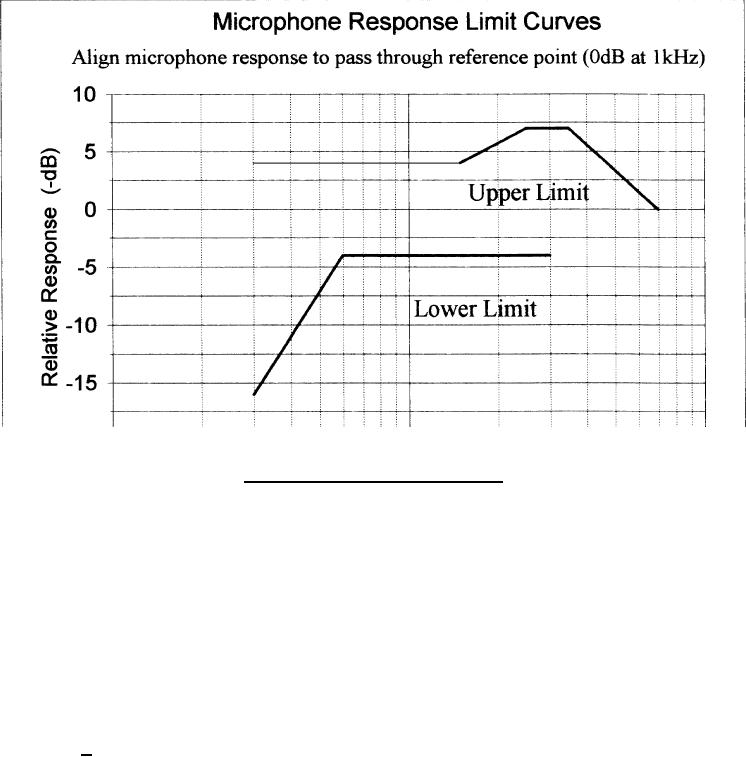
MIL-PRF-49078A(CR)
Figure 1. Microphone Response Limit Curves.
Connect a handset under test through a suitable audio amplifier, having essentially flat response in
the audio frequency range and which provides side tone approximately 20 dB below the talk level,
to another handset. Conduct a two-way conversation between handsets. Measure clarity of the
communications against the following criteria:
a. Minimum output of the microphone of -56 dBm with a 1000 Hz sound pressure input
of 28 dynes per square centimeter.
b. Total harmonic distortion of the microphone not to exceed 5% over the frequency
range of 300 to 3500 Hz.
c. Output impedance of the microphone as measured at the handset interconnection of
150 ohms + 15% at 1000 Hz.
d. Signal-to-noise ratio of the microphone not less than 17 dB.
e. Acoustic output of the earphone not less than 104 or greater than 112 dB above the
reference level of 0.0002 dyne per square centimeter when 1 milliwatt at frequencies in the range
of 20 to 3500 Hz is applied to the earphone circuits. In the range of 3500 to 9000 Hz, the
response not greater than 110 dB.
f. Acoustic output of the earphone no more than 5% total harmonic distortion at any
frequency between 100 and 3500 Hz.
g. Earphone shows no more than a 3 dB change from its original response curve when
operated at a 300 milliwatt level, 1000 Hz, for a period of 8 hours. Handsets subjected to this
requirement shall not be delivered on the contract.
3
For Parts Inquires call Parts Hangar, Inc (727) 493-0744
© Copyright 2015 Integrated Publishing, Inc.
A Service Disabled Veteran Owned Small Business